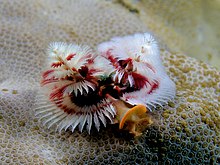Relatively unknown in the West, chaga is one of the strangest-looking fungi you will ever see. Hard, woody and found on birch and other trees, it looks like a hardened, crusty formation of burned charcoal. Despite its unseemly appearance, it possesses profound healing properties.
Found throughout northern parts of Europe, Asia and North America, chaga draws nutrients from the tree on which it grows. It is rich in antioxidant phenols, and in studies with mice has exhibited anti-inflammatory and immune-boosting effects. One of the most surprising benefits of chaga is the relief of psoriasis, a disease notoriously difficult to treat. In a 1973 Russian study, chaga was given to 50 people suffering from psoriasis and everyone saw improvement. “Nothing really works for psoriasis,” Kilham says. “But everyone in this study had their psoriasis resolved. There’s never been an effect like that for psoriasis.”
Chaga extract may also have anti-cancer effects, according to some laboratory studies. One 2008 study observed that chaga extract inhibited liver cancer cell growth, suggesting that this fungus may provide a new therapeutic option for treating liver cancer.


